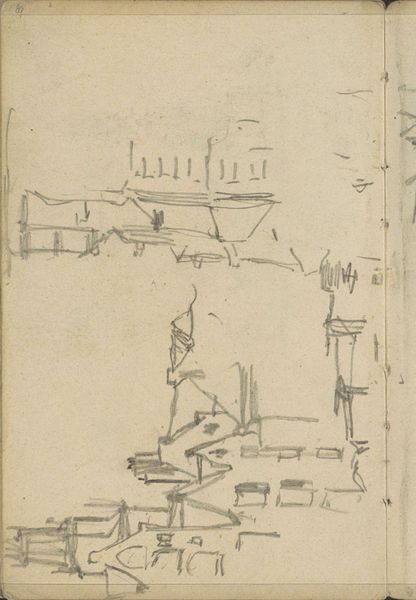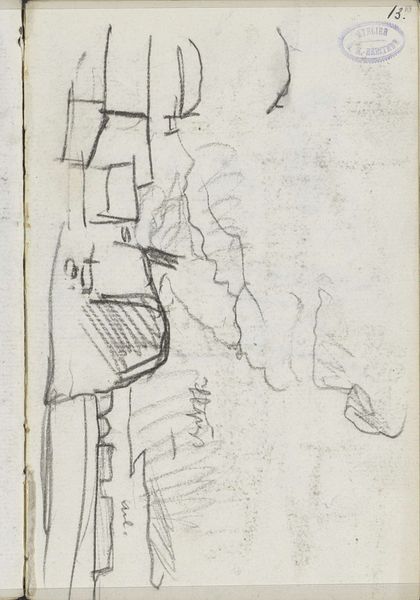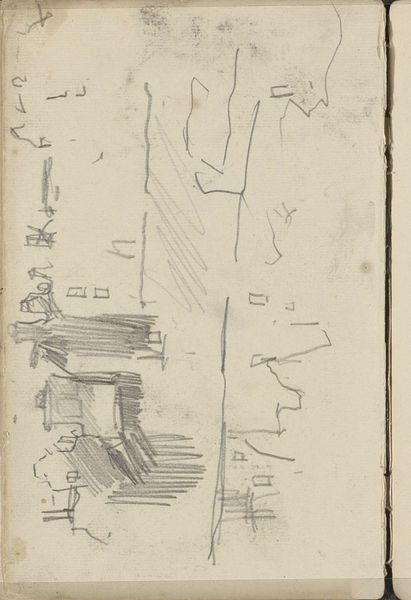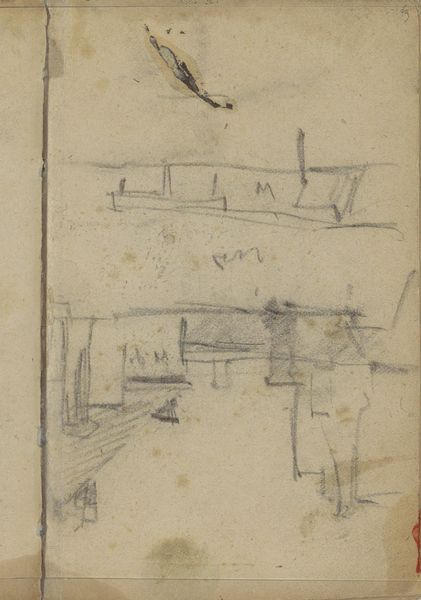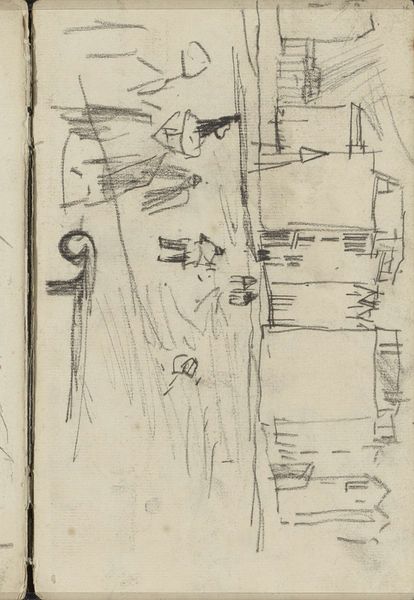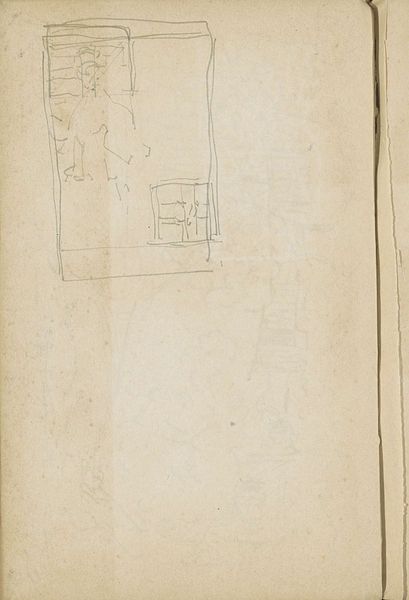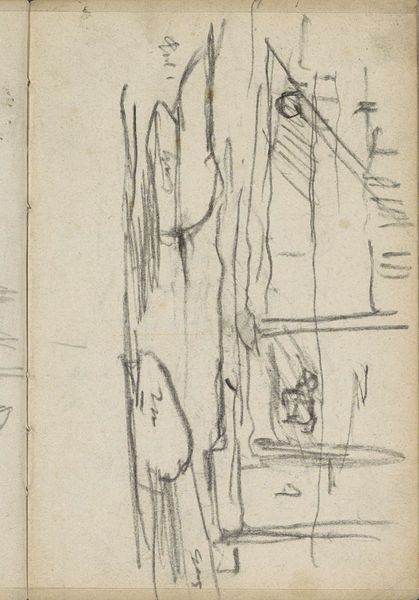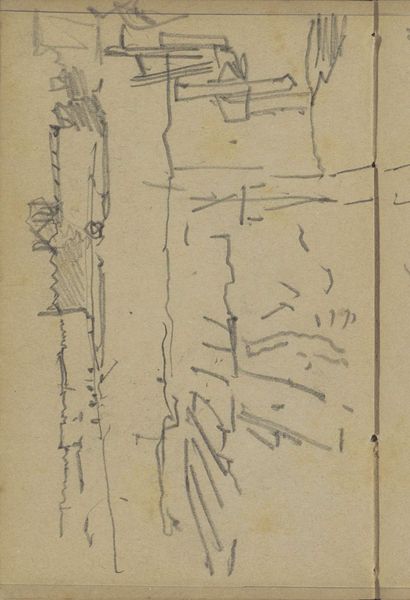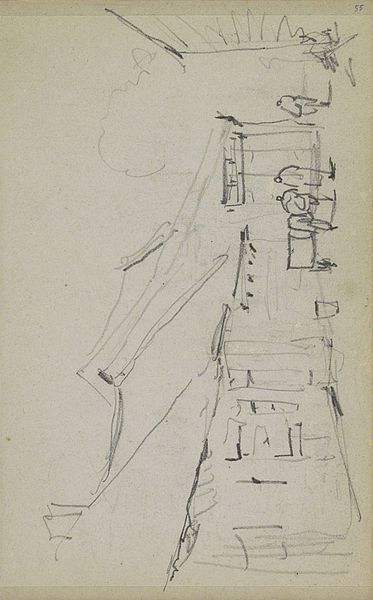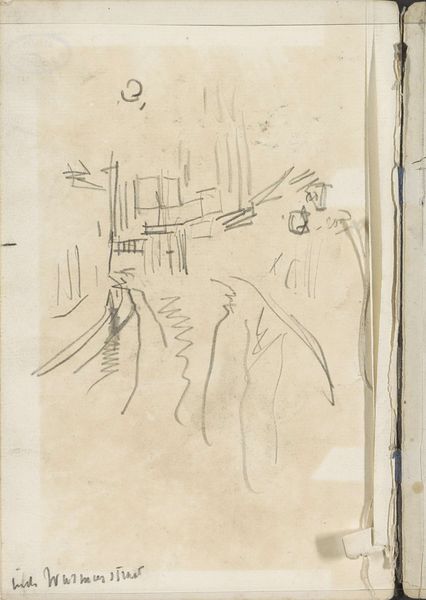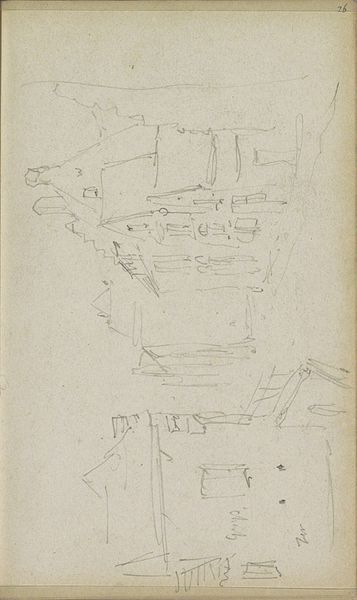
Architectuurstudies en een reliëf uit een huis aan het Leidsplein te Amsterdam c. 1900 - 1923
0:00
0:00
georgehendrikbreitner
Rijksmuseum
drawing, paper, pencil
#
drawing
#
dutch-golden-age
#
paper
#
pencil
#
line
#
cityscape
#
realism
Copyright: Rijks Museum: Open Domain
Curator: Looking at this pencil drawing by George Hendrik Breitner, created sometime between 1900 and 1923, one sees studies for architecture and what looks like a relief from a house at Leidsplein in Amsterdam. What's your initial reaction? Editor: Sparse. Intimate, almost like sneaking a peek into the artist’s personal notebook. The city reduced to fundamental forms, yet the figures in the relief hint at deeper narratives, perhaps myths or allegories relevant to the building’s purpose or the owner’s status. Curator: Precisely. Breitner, known for capturing the urban experience, offers in this work an interesting study. While incomplete, we get a clear glimpse of how buildings held cultural weight, particularly as Amsterdam expanded and showcased its social and economic ambition. Editor: I am struck by the bareness. It almost feels like a form of coded language or pictograms for ‘house’ and ‘figure.’ Do these images trigger historical associations beyond the straightforward depiction? The rough lines remind me a bit of the early stages of creating something monumental. Curator: You're pointing towards an interesting interplay of intent. In those early years of the 20th century, art academies were booming, defining acceptable forms of realism. A loose architectural rendering like this, would likely have fallen outside their curriculum – these sketches signal Breitner's interest in the reality and symbolism beyond the strictly academic. Editor: The realism certainly. Even in this state, I can almost sense the pulse of city life filtered through the architectural elements. The incomplete figures on the relief, even—or especially—in their suggestive form, feel potent, their postures loaded with the visual memory of history. Curator: I agree. These brisk lines act almost as cultural notations. The house in Leidsplein was obviously a signifier, broadcasting its presence in the changing urban landscape. By examining such preliminary sketches, we access not only Breitner’s artistic process but the socio-political meaning embedded in city structures. Editor: Indeed. To consider, so many layers contained within something so simple and seemingly unfinished. It reveals how the past lives within us all, subtly shaping perception. Curator: The power of sketches. It's funny how they teach us so much about what a society holds dear. Editor: Absolutely. And makes one consider how symbols evolve, retain resonance, and contribute to a shared cultural heritage.
Comments
No comments
Be the first to comment and join the conversation on the ultimate creative platform.

